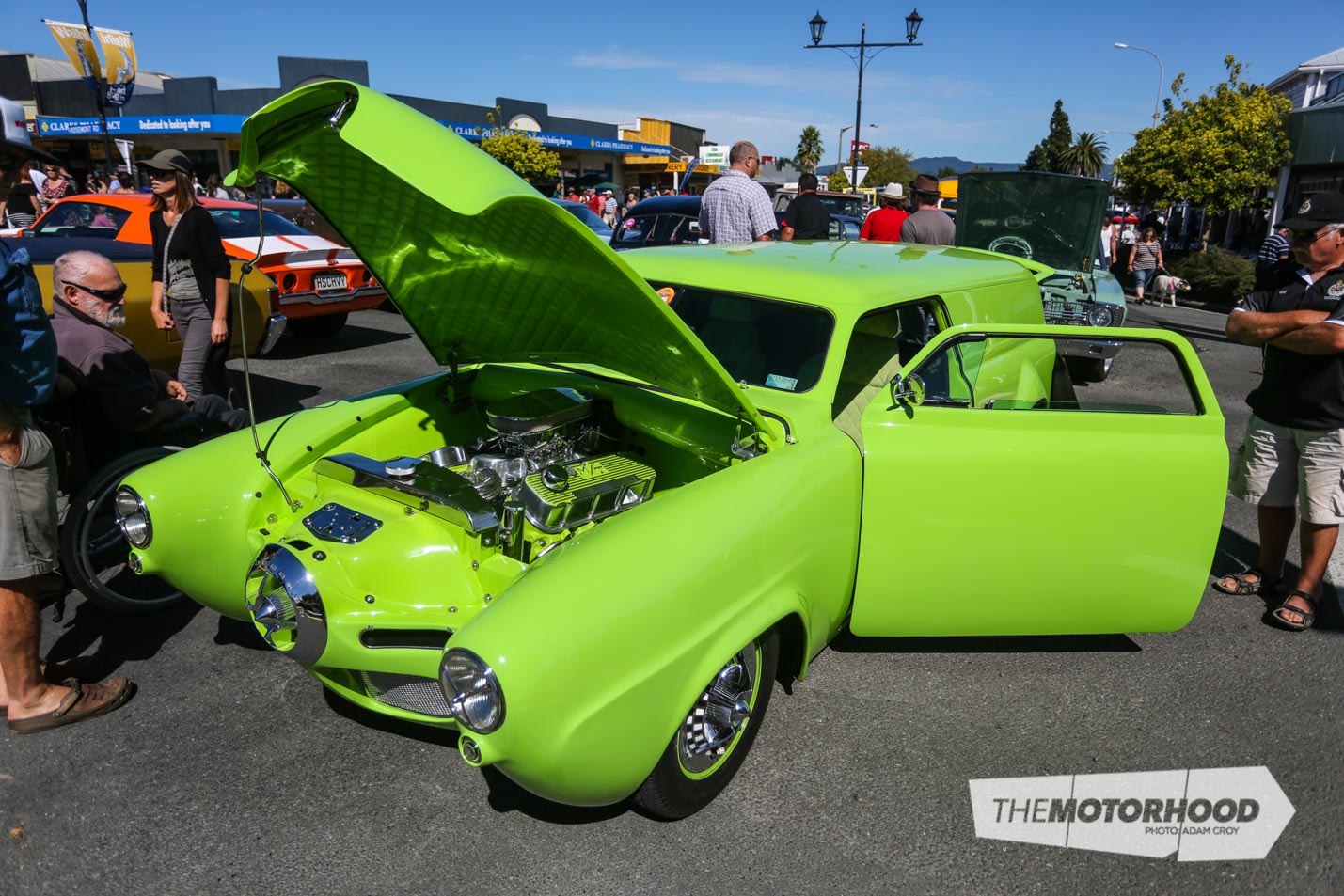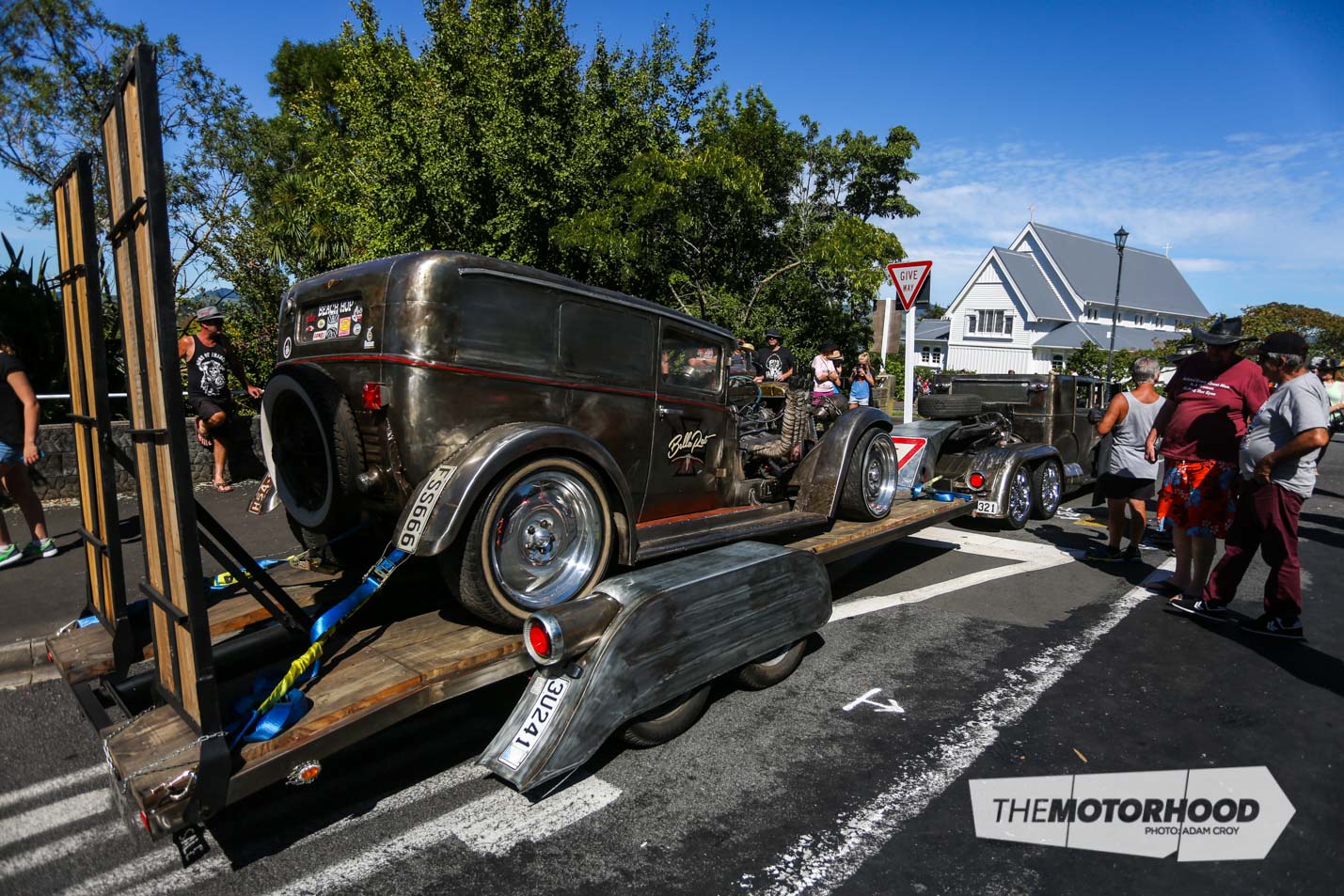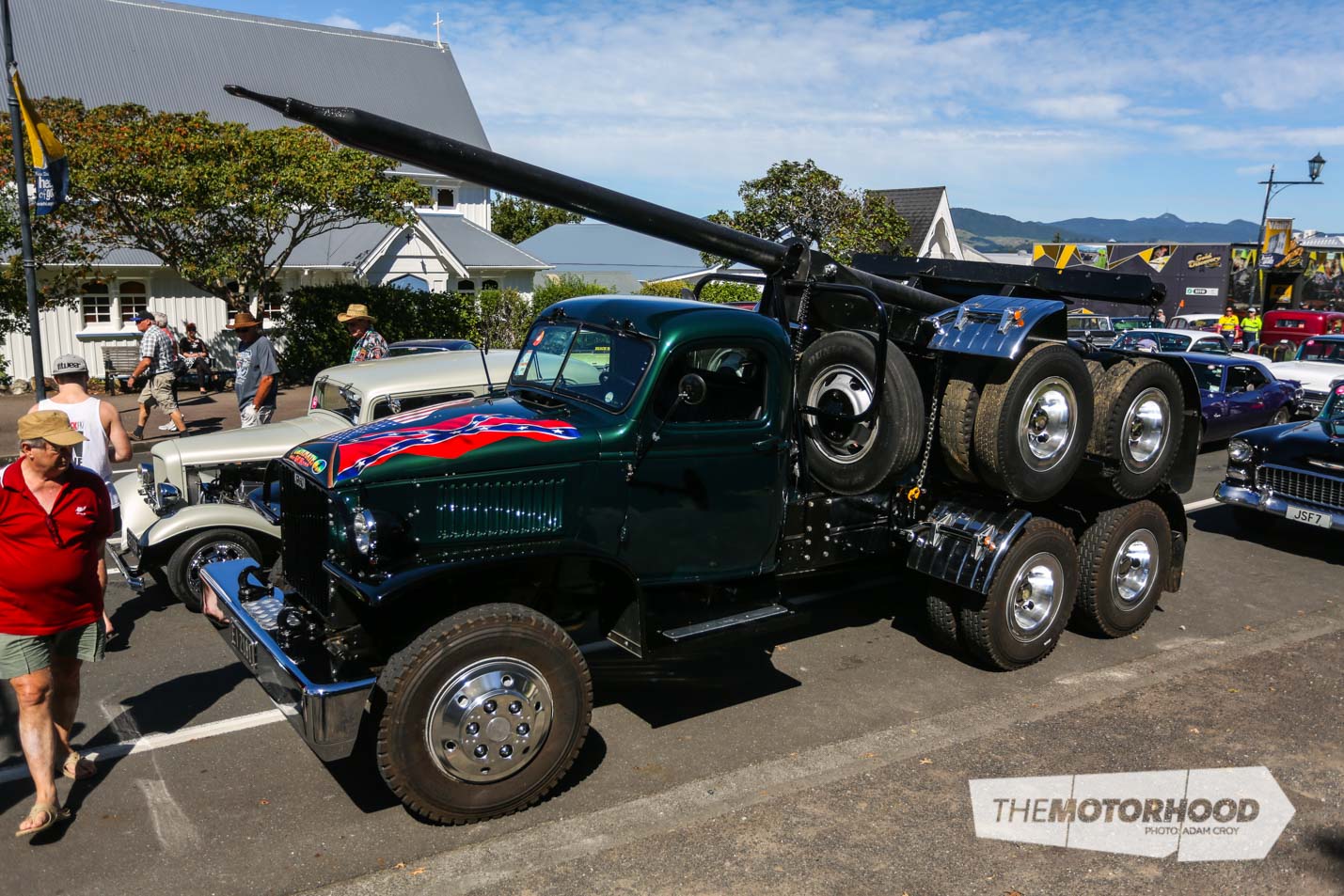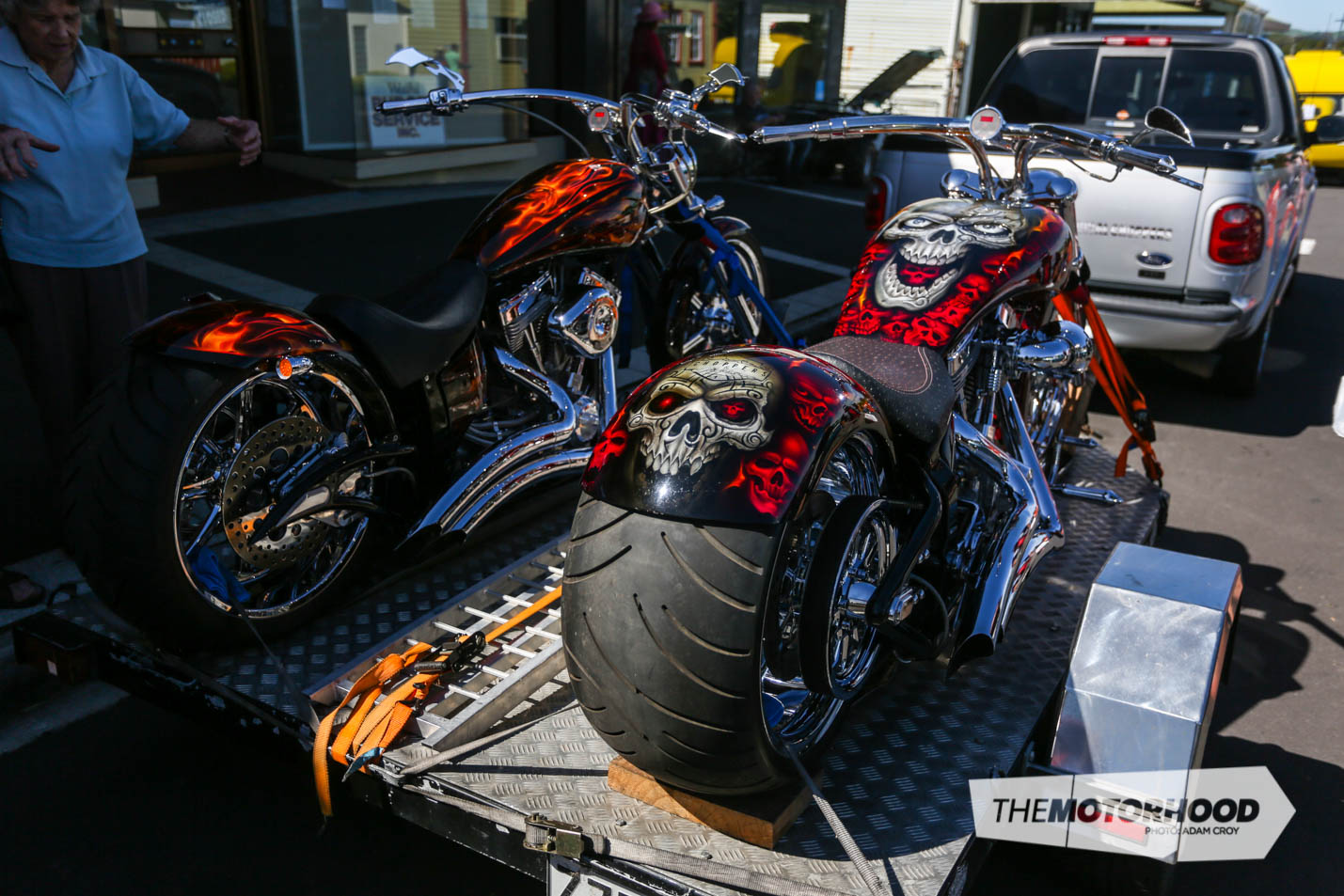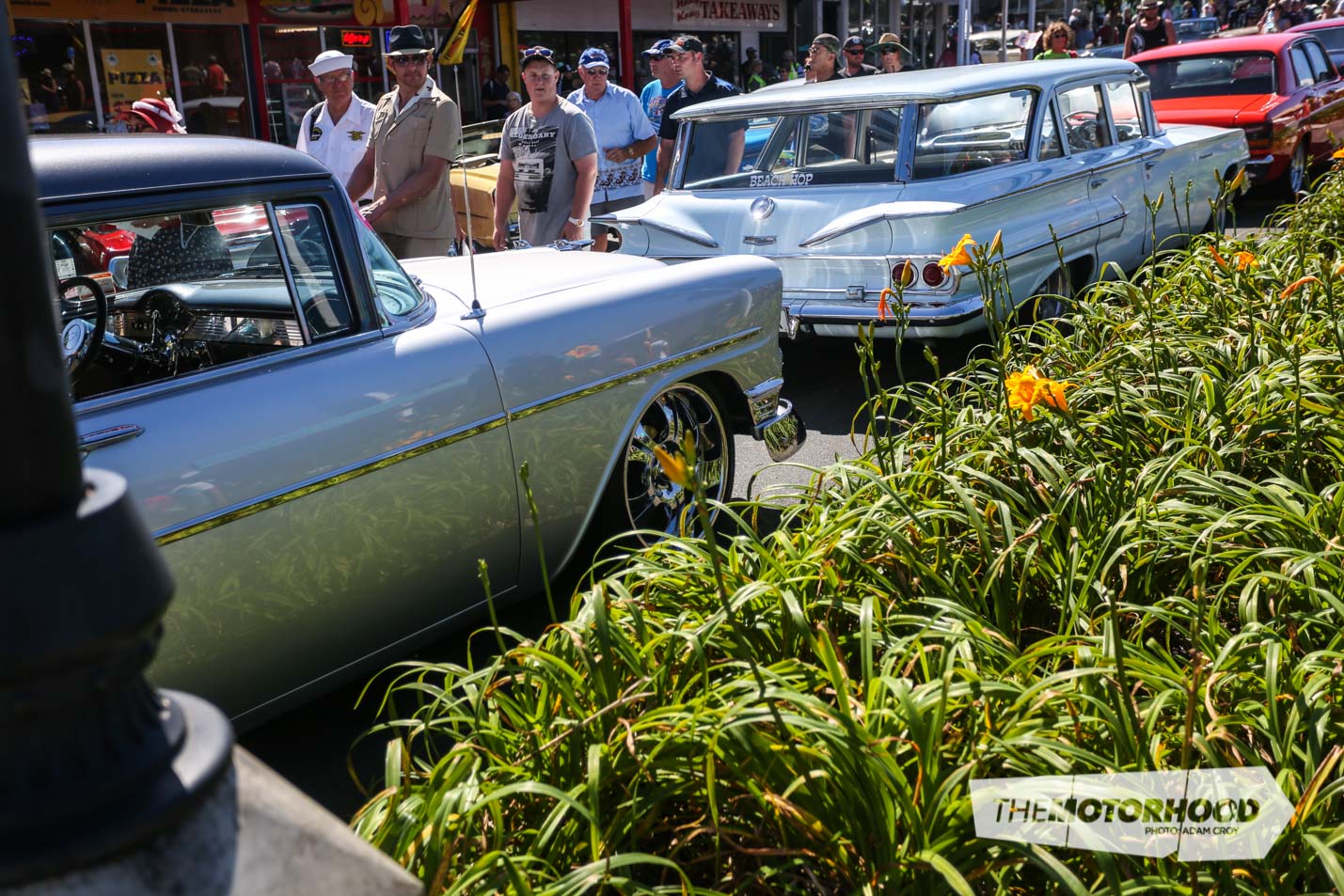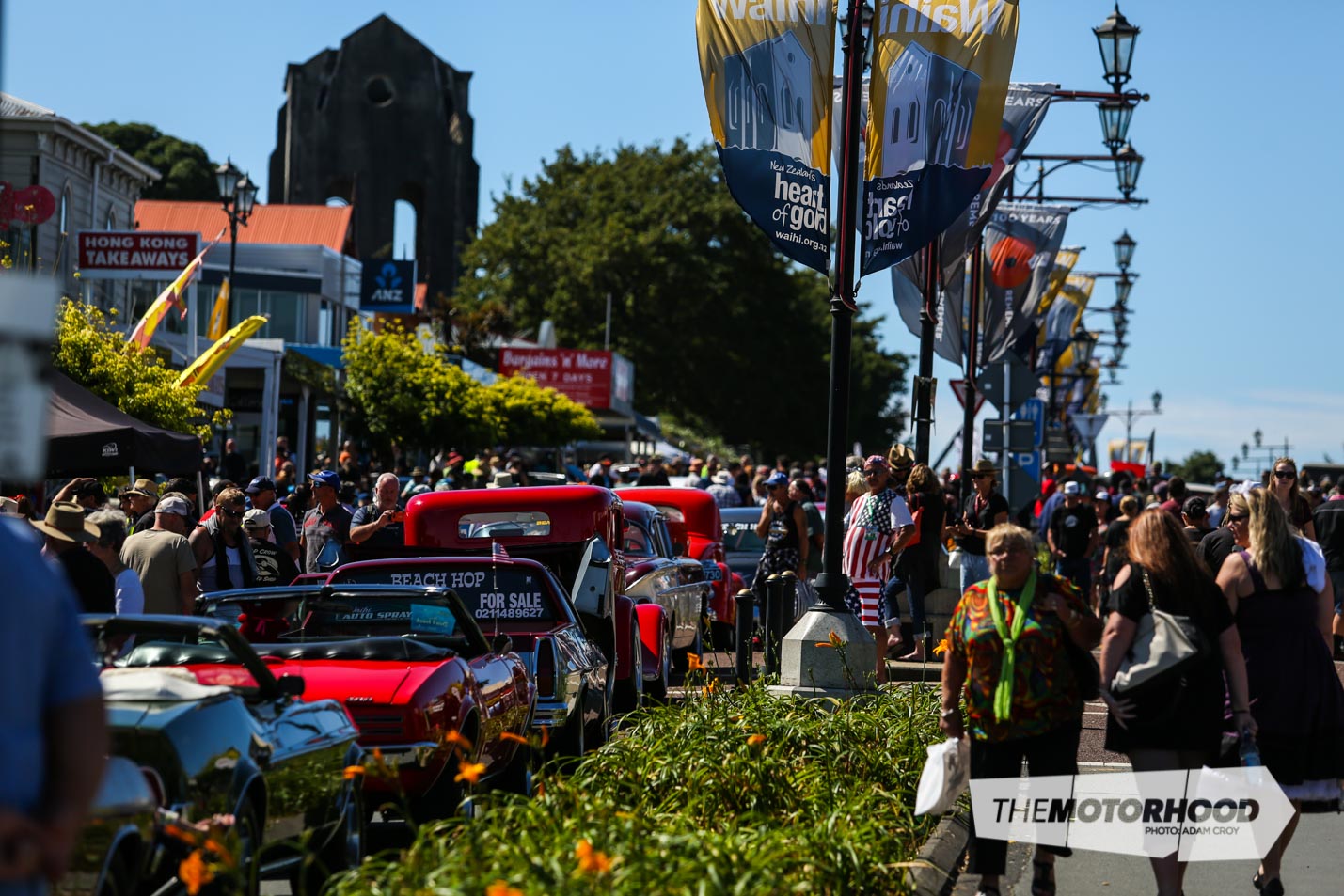The second day of Repco Beach Hop 16 (March 30), was what most would have associated with previous years’ day one — the Go Waihi Warm Up Party. As always, entrants assembled their cars outside the Ford NZ Reserve (Williamson Park) in Whangamata, before departing Waihi-bound at 10am.

The bulk of Waihi’s Main Street, as well as myriad side streets, was taken over by ‘Beach Hoppers’ in their classic vehicles, as well as the uphill Cornish Pump House reserve. A bonus was the live band — Tim & the Rockets — playing inside the old Cornish Pump House, providing some very welcome entertainment.

Not only are there enough cars to take up a whole day’s worth of browsing, but the Waihi day is pretty well known for the ‘drag race’, which is “something you don’t want to miss” according to the official Beach Hop programme. This is where a team of usually very hairy blokes dressed in drag have a race down the street.

It’s not pretty, but it sure is a barrel of laughs, and a fine way to unwind from what was actually a very hot and sunny day. Of course, knowing how the weather would turn out over the remainder of Repco Beach Hop 16, that great atmosphere helped make our memories of Waihi even fonder.

We’ll have full coverage in our NZV8 Beach Hop Annual 2016, which will be out in mid May — or you can pre-order a copy here.

